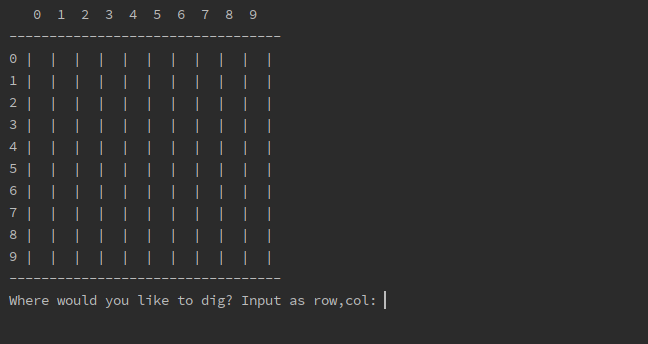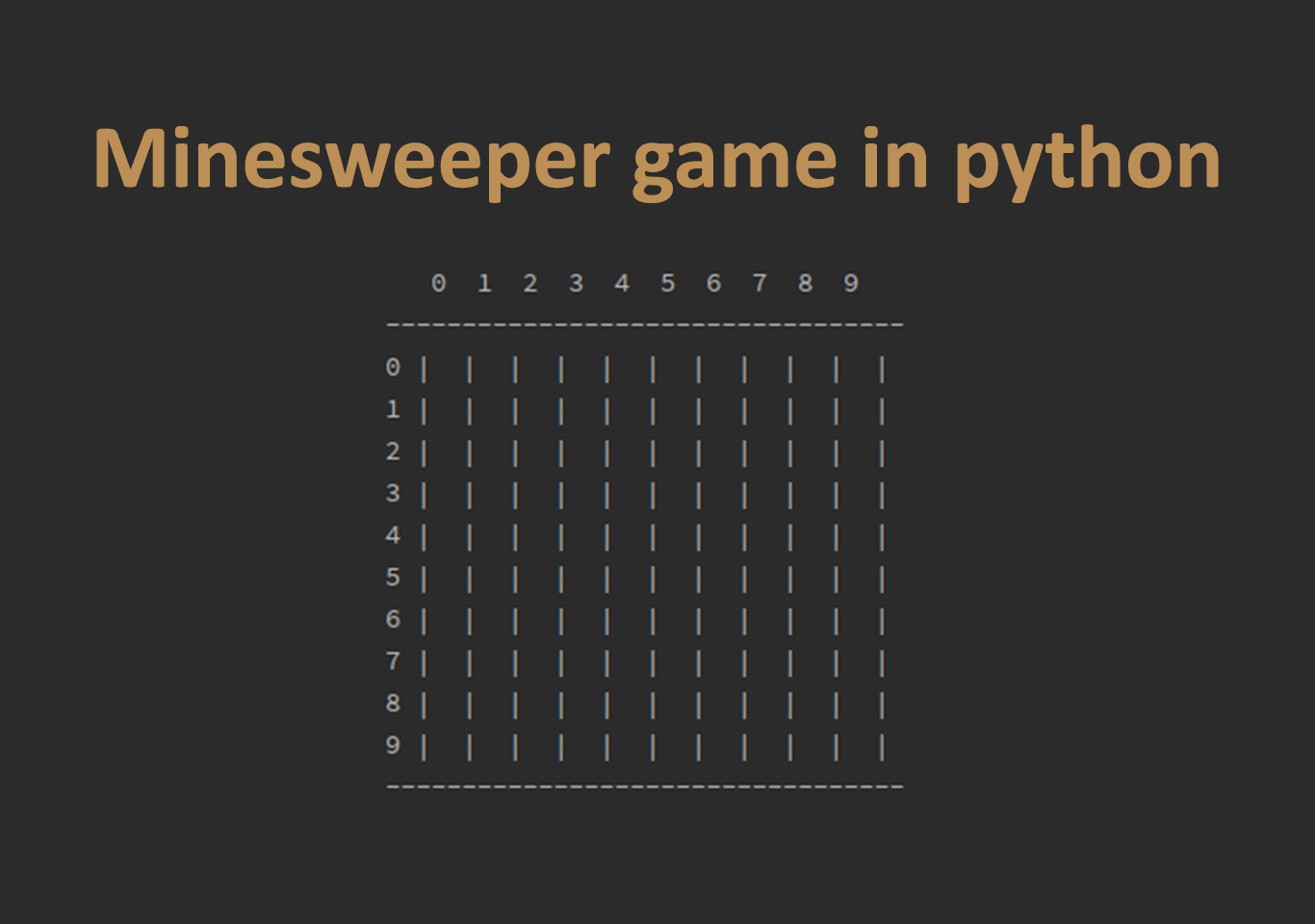Introduction
Minesweeper is a single-player puzzle game made in Python. The objective is to clear the board without exploding any of the hidden bombs. One wrong click, and it’s game over.
Minesweeper is a famous logic puzzle game that has been popular on computers since the early 1990s. The game’s purpose is simple: uncover all of the safe cells on a grid while avoiding any buried mines. When a player clicks on a cell, it displays either a number (showing how many mines are adjacent), a blank space, or a mine.
The task is reasoning and deduction to identify which cells are safe to click. One wrong click, and the game is over. This project is ideal for honing your understanding of data structures, game logic, and even graphical interfaces if you want to move beyond the console. It’s an excellent method to use your programming talents to tackle a real-world problem.
Minesweeper game is created using python programming language. In this project, we are creating the most played game that is found on our computers and mobile phones. The game has a 10×10 board that you see when you execute the project. It has a command-line interface. You must use numbers from your keyboard to plot inside the box. The game randomly puts mines and estimates the amount of hints.
Clicking a mine terminates the game, whereas clicking an empty cell displays the surrounding cells. If you find the hidden bomb while plotting the number, the game ends. If you plot all the numbers not exploding the bomb you win. You can edit the board by changing the code. The program will ask the user where they want to dig. You must input numbers in the form of row and col as coordinates. Eg. (0,0) (2,3) etc. See the screenshot below.

Why is Minesweeper popular?
- Simple but challenging: The rules are simple, but the game needs logic, strategy, and sometimes a little luck.
- Fast-Paced: Each game can be completed in seconds or minutes, making it ideal for short challenges.
- Minesweeper promotes logical thinking, pattern recognition, and problem-solving abilities.
Key components of the Python minesweeper game
Game Grid Setup
The grid is often a 2D list (matrix) that provides information about each cell, such as whether it contains a mine, how many nearby mines it has, and whether it has already been exposed.
Mine placement.
Randomly deploying mines across the grid is an important aspect of the arrangement. You can use Python’s random module to ensure that mine positions change each time the game starts.
Calculating Neighboring Mines.
Once the mines have been laid, each cell must be examined to see how many mines are present in adjacent cells. This allows the gamer to make informed decisions.
Revealing Cells
When you click on a cell, it should disclose either a number, a mine, or a blank spot. If a blank cell is disclosed, it should recursively display all adjacent blank cells until a number is encountered.
Game Over and Winning Conditions
If a mine is revealed, the game is over. If all safe cells are discovered without activating a mine, the player wins. Implementing this logic keeps the gameplay cycle interesting.
Benefits of This Python Project
- Improves Python skills by utilizing loops, conditionals, and functions effectively.
- Enhances algorithmic thinking with recursive functions and mine-checking logic.
- Improves your problem-solving approach, particularly when debugging logic mistakes or unexpected behavior.
- Prepares you for advanced Python game creation, including AI and multiplayer options.
- Ideal for code demonstrations at interviews or on your GitHub portfolio.
How to use this minesweeper project?
- Download and extract the zip file.
- Open the file in editor or IDE. (pycharm, anaconda)
- Execute the program.
- Play the game.
- Enjoy and share.
Click the button below to get the source code for this minesweeper project.



mly informative and well-written!”